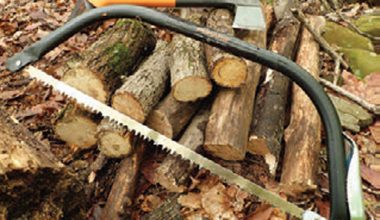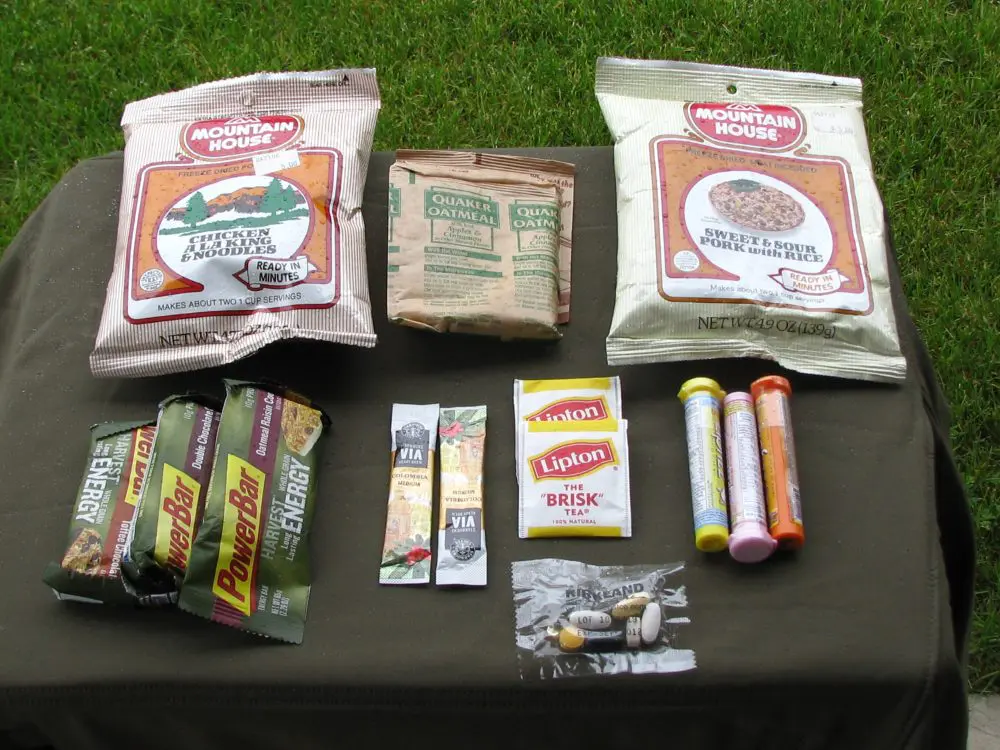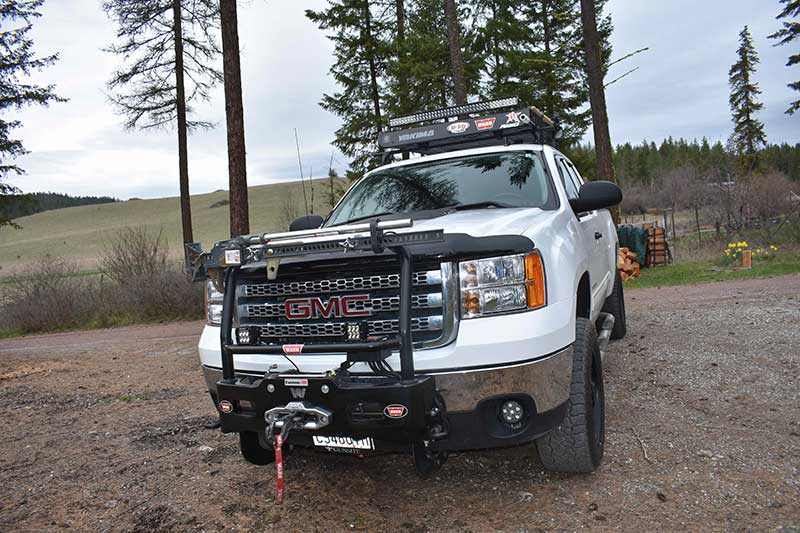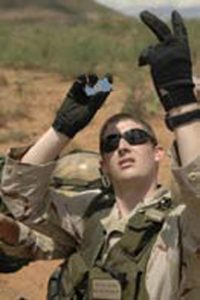
And while camouflage is extremely important during any evasion scenario, other factors also come into play.
Proper Escape and Evasion (E&E) should be thought of as a package of skills instead of a singular technique, since you may not know all the resources a threat could employ (tracking dogs, air surveillance, night vision, thermal imaging, spy network, etc.).
Human nature is to run away from a threat as fast as possible, but keep in mind that simply sprinting without planning may make you an easier target to apprehend. If you ever watch the TV show COPS, it’s pretty obvious that the panicked runners always get caught. It’s always best to prepare for the worst possible scenario, then carefully execute that plan through discipline instead of fear.
Table of Contents
NOISE DISCIPLINE
Noise discipline means total silence! Before moving, always secure any loose item on your person or pack. After securing it, jump up and down and if anything makes any sound, secure it again. Get rid of all Velcro, or tape it up. There’s no better giveaway than trying to move silently through brush only to get a piece of Velcro snagged and hear that unique ripping sound.
If possible, always move during bad weather so the rain, thunder, snow or wind will mask your noise. You should also utilize unnatural noises such as trains moving in the background. Make sure watch alarms and hourly chimes are turned off, and cell phones or other non-essential electronic devices disabled. As a side note, if you ever use a cell phone in an evasion scenario, be sure to remove the battery after using the phone. Technology is now available to track some phones even if they are turned off. The only reasonable amount of security is to remove the battery.
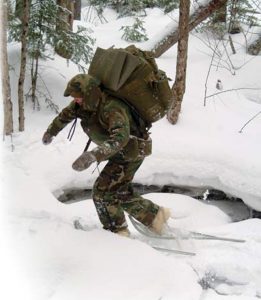
“Talk and Toss” disposable cell phones offer a little more security, since they are not registered to you, but consider them one-time-use phones, remove the battery, and toss them when you’re finished with your call.
LIGHT DISCIPLINE
Avoid using any light source unless absolutely necessary. This means no smoking. Be aware of any electronic devices, such as watches, that may have backlights or utilize glow-in-the-dark tritium. As stated in Part 1, avoid gear or clothing with black or white colors, because they project a strong IR signature. Earth tones are always best.
If you have to use binoculars, scopes or eyeglasses, don’t forget about glass glint, which can be seen from far away. Also remember that moonlight reflects off vehicle glass, clear water bottles, etc. Only build a fire when it is absolutely necessary for your survival, then keep it small and try to build it under heavy canopy to dissipate the smoke as much as possible.
When observing at night, always scan with your eyes and avoid trying to focus in one direction, since scanning and peripheral visions will pick up faint light sources and movement more quickly than direct sight.
Keep in mind that many “threat forces” have poor light discipline when moving through woods or open ground. Exploit that if you need to, because bright lights create hard shadows and cause the user to lose his peripheral night vision.
E&E MOVEMENT
Always be aware of any light source when traveling (sun, moon, etc.) and avoid silhouetting against them. Only stop at points of concealment and use all your senses to survey the area: look, listen and smell for signs of human activity, vehicles, aircraft, animals, etc.

Pick firm footing when moving by carefully placing the foot lightly but squarely on the surface. Try to avoid turning over any ground cover, rocks or sticks, or scuffing bark from logs. Be careful not to slip when moving, since this creates a very visible sign to even the most amateur tracker. If you’re worried about the noise from breaking sticks, then wrap your feet in cloth to help muffle the sound. If tracks are unavoidable in soft ground, then try to place the track in the shadows of vegetation or other natural objects. Moving during rainfall or windy periods will allow the tracks to fill in. Always take advantage of any solid surface because it will leave less evidence of travel.
Avoid disturbing vegetation above knee level and do your best not to break branches, leaves or grass as you move. Do not grab any small trees or brush, since that may scuff the bark or break the plant. In snow country, this will also remove the accumulated snow, thus giving your pursuers easy sign to track you by. If you have to travel through heavy vegetation, use a walking stick to part it, then move it back to its original position. These pointers will not stop the expert tracker from tracking you, but they may buy you some critical time.
Most importantly, do not litter when traveling. Any type of trash or lost equipment will be quickly spotted because it’s not natural and will identify you to your pursuers.
COUNTER-TRACKING
If you are being pursued by dogs, concentrate on defeating the dog handler, not the dog. If time permits, you can move in zig-zag patterns through heavy brush and rough terrain, thus creating more difficulty for the handler navigating with a dog on a leash. This may also create doubt within the minds of the handler and the follow-up team. A figure “4” or box movement in a large area will also help throw off trackers.
Set booby traps. Even if they are not effective, a simple trip wire or the appearance of a deadly booby trap will slow the pace of the tracking team and make them more cautious in their movement.
Keep in mind that these tactics will also fatigue you, as well as reducing the time/distance factor that may be crucial to your escape, not to mention that the more deceptions you attempt to create, the more scent and sign you will leave behind. Be aware that techniques such as these can become counter-productive, since the more time you spend trying to confuse trackers, the more they may close the gap.
Whatever you do, it is critical that you never move on an azimuth. If you are being tracked and the team is paying attention to your direction of travel, they simply have to move an advance team in front to intercept you. Move in a general direction with slight changes if you know you are being tracked. Do not go directly toward an obvious location. For example, your target location may be a clearing to be evacuated by air, a main road, or a village. Your trackers will anticipate your movement to these locations because it is human nature to try to reach an area of “safety” as quickly as possible.
URBAN E&E
Depending on the situation, it is usually best to avoid urban areas because a larger number of threat forces are typically concentrated there, but if you have no other choice, then try to blend with the locals as much as possible. Look like you belong there and use crowds to your advantage. Act casual, don’t run or appear frantic. Avoid groups of children, since they are quicker to recognize a stranger than adults are.
If you reach an urban area after an evasion through open ground, try to change clothing and clean up as soon as it is safe to do so. Dress down and remove any signs of who you are. Be aware of local curfews and habits (for example, prayer times in Muslim countries). Do your best to hide E&E tools on your body in case you are recaptured.
Avoid overeating or appearing to be too hungry. Stay away from markets, as they are typically one of the first places pursuers will place “pavement artists” (watchers whose only goal is to identify and relay information on the person being sought). With that said, markets during closed hours are a good place to source thrown-away food and tools.
If you choose to stay in a hotel, try to get a room on the second floor (known in some countries as the first floor). It will buy you some escape time if you are watching for threats. Make sure to mentally map your escape route by exploring it both in the daylight and at night. Block all the doors and make sure the window is a good escape route. Memorize where the stairs and elevators are, as well as any utility rooms or ceiling areas that may aid you.
If you sleep, do so with your clothes and shoes on and all gear packed and ready to move at a moment’s notice. Again, if you have to use a cell phone, use a throwaway phone or steal one and discard it after use. If you think you are being followed, use your surroundings, such as windows and mirrors, to your advantage. If you have to evade, don’t forget about the underground of large cities. Drainage systems can often be used to move about undetected.
LAST RESORTS
You should only resort to stealing, burglary and/or bribing as last resorts. If you have to break into a place, test the alarm systems before attempting entry. Repeated tripping of an alarm, then waiting in a safe area, will often condition the owners and authorities to a false alarm, making it easier for you to gain access.
If you have to steal a vehicle, older cars are easier to hotwire than newer ones. In fact, some of the mid-1990s GM products are amazingly simple to drive off with minimal tools. If you do acquire a vehicle, disable all interior lights by pulling the fuses as soon as it is safe to do so. You never know when you may have to crawl back into your car under cover of darkness, and dome or dash lights are nothing more than signaling beacons!
Perhaps one of the best evasion tactics is to study and memorize an area of operation before ever setting foot in the place. Knowing the geographic lay of the land or a city layout can be a crucial component to successful evasive tactics, although in many kidnap situations, this may not be possible.
In the end, circumstances will always dictate the required actions, but the ideal evasion tactics are to remain lowkey and calm while cautiously moving toward freedom.




